Damien Daufresne. Bilder und Papierarbeiten
7 November to 12 December 2020 ⟶ Showroom
Exhibition view
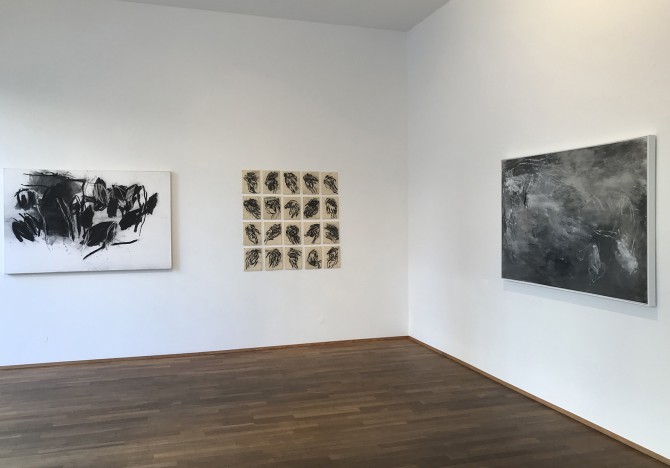
Exhibition view
Untitled, 2020, charcoal/chalk/pigment/paper laminated on canvas, 100 x 150 cm
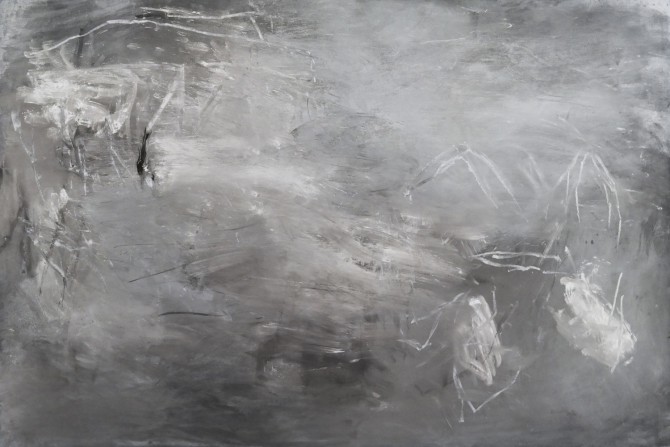
Untitled, 2020, charcoal/chalk/pigment/paper laminated on canvas, 100 x 150 cm
Various works on paper: O.T., 2018, charcoal/paper, each 25 x 19 cm
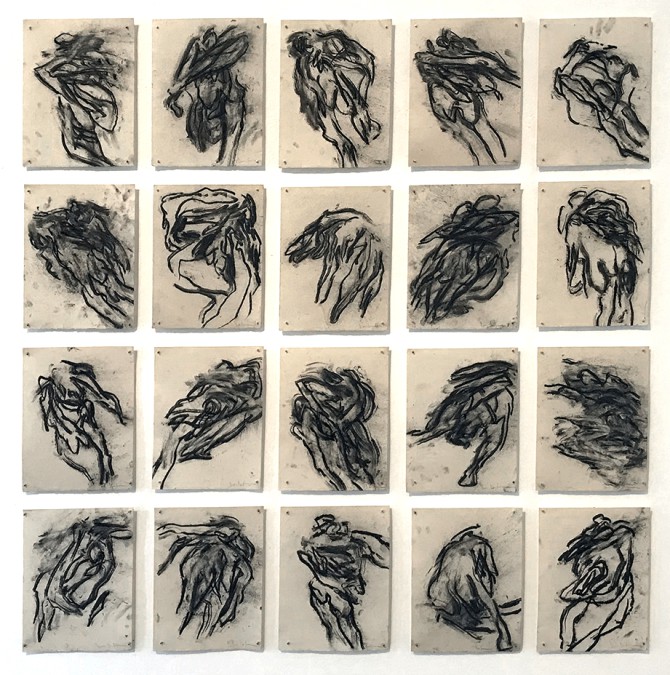
Various works on paper: O.T., 2018, charcoal/paper, each 25 x 19 cm
Exhibition view
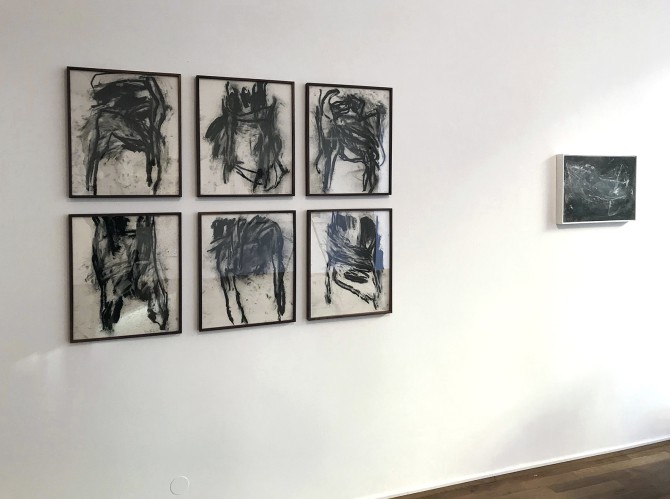
Exhibition view
Exhibition view
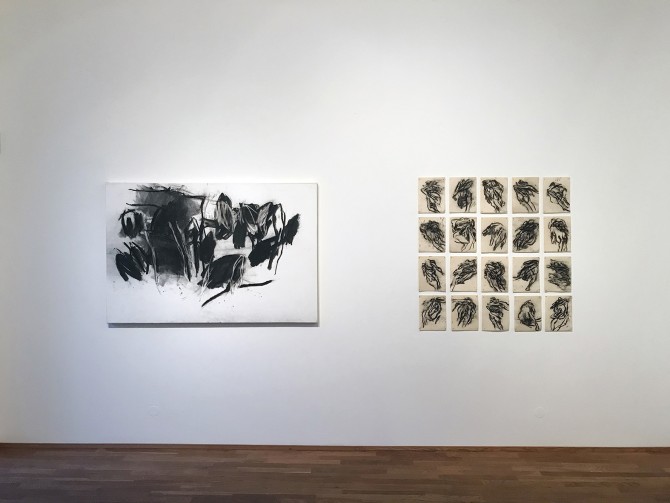
Exhibition view
Untitled, 2017, charcoal/paper laminated on canvas, 100 x 150 cm
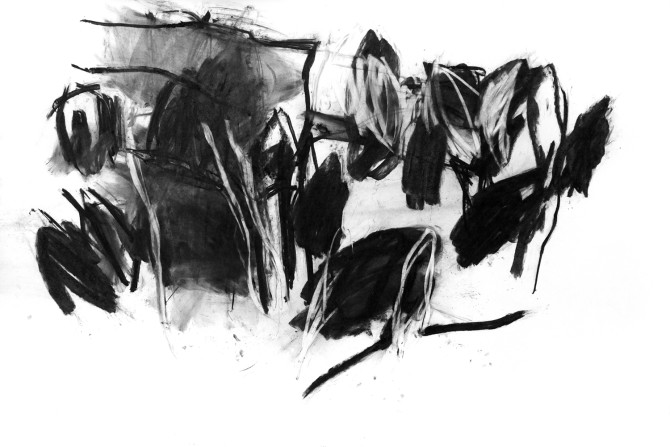
Untitled, 2017, charcoal/paper laminated on canvas, 100 x 150 cm
Damien Daufresne's paintings have no titles. "They are drawings." Full stop. "And that's already a lot," says the artist, who was born in Paris in 1979. Paper and charcoal, that's all he usually needs. But with the help of these two materials, he develops an enormous visual power. The working process is intense. Small drawings can emerge very quickly, the grainy, sparkling charcoal stroke reveals the powerful and dynamic movement from the wrist. The expression is gestural and immediate. For larger works, Damien Daufresne uses the resistance of the grey linoleum floor in his Berlin studio, employing his whole body. He spreads charcoal, chalk and pigment on the paper with the swing of his arms, wipes or erases white spaces. The heel of the hand and the edge of the hand are important points of contact. They are another tool that tells something about his artistic career, which began in the etching workshop at the École nationale superieure des Arts Décoratifs in Paris. The etching mixture on the zinc and copper plates is also always wiped out with the edge of the hand. Daufresne likes the haptic, the sensuality. This way of working is also reflected in his main motif: the body. Whether lying, naked, entwined. Heads bandaged like those of mummies. Feet partly like hooves. Human-animal-like. Sometimes hidden, then almost plastic. His movements while drawing are impulsive and are replaced by concentrated pauses. What looks like a reduced dance controlled by emotions, Damien Daufresne himself describes as a dialogue. He reacts to what arises. Again and again, he goes back to cover old traces with new ones. His state of being sets the rhythm, it has nothing to do with intellectual analysis. When he begins, there is no idea. Initially indeterminate things find a form. "All pictures are already painted anyway," says the 41-year-old. Through his work, he enters this cycle, feels connected to a universal energy. "Goya is still completely there - it doesn't matter if something was 600 years ago or if it was the day before yesterday." Goya plays a role - in the studio, a photocopy of a section from one of the "Pinturas Negras", the Black Paintings, is stuck to the wall. Cattle and pig halves, taken in a slaughterhouse in the south of France, also play a role. Photographs of them hang next to the paintings he is working on. And again and again, literature. A series of small formats has been created to accompany James Joyce's erotic letters to his later wife Nora. They are drawings on paper from the famous printing workshop Atelier Lacourière in Montmartre, which is associated with names like Matisse and Braque. Or a series on poems by George Bataille. Samuel Beckett is close to him. Daufresne feels at home among the Informel artists, among Asger Jorn, Emil Schumacher or Georges Noël. "It's a bit like a cemetery, but for me they are not dead." What matters is what touches him. And it can find its way into his work now or much later. Besides drawings, this also includes analogue photographs and films shot on Super 8. The physical material is important to him. In addition to charcoal and chalk, this includes photographic paper, film rolls and chemicals. It is precisely these aggressive substances that get under the skin that create the necessary resistance. They react - and he reacts to them. What the works have in common: they do without colour, black and white dominates. The diversity of grey is evident in the recent large-format, two-dimensional paintings. The grey here shimmers brownish, yellowish, bluish. In his drawings, photographs and films, Daufresne creates moments of condensation, in which a dark secret or even a still concealed radiance is inherent. In them, he exposes the poetry of things. Damien Daufresne takes on some works again and again. It can take him ten years to validate them. Then he applies layer after layer, depth emerges, often also a pull. They are palimpsests that grow into a narrative that is emotionally transmitted to the viewer: vivid, powerful or even tender. And that is a lot. (Text: Cara Wuchold)